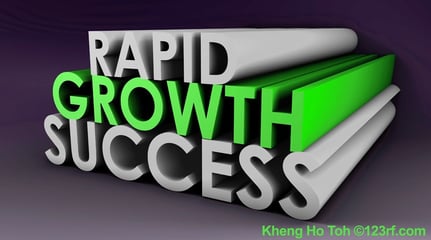In Part 1 of "Negotiating on the First Tee, we discussed the practice of negotiating with your prospect before you begin your presentation. In Part 2, we continue this discussion and add more to the conversation.
In order to increase sales and close more deals, you must understand the client's business strategy, build a strong foundation for negotiation, and cross off all the boxes for a killer Sales DNA.

- Establishing the ground rules for time of presentation are critical. Before we get to that though, you must have a transitional discussion
- "Let me take a minute to review where I think we are..."
- "You have the following issues a,b, and c that if not taken care of within this time frame will cause the following to happen and this outcome is a have to fix problem"
- "Your capacity to invest time, money and effort to fix the problem is this…"
- "And I’m assuming for a minute that if we are able to fix this for you, in the budget you’ve identified with the right criteria and priorities, you would also want me to be in a position to answer any and all questions at that time"
- "Did I get this right?" (Buyer says yes)
- "Good, assuming we can do this I will be prepared to do all those things. If I can’t, I will call in advance and cancel our presentation meeting. Fair?" (Fair)
- Ground rules discussion:
- "It may not be effective here, but there is a process that we recommend to make sure we are all on the same page, can I share that with you?" (Yes)
- I need for you to be prepared as well:
- "As I am going through my presentation, you will be thinking one of 2 things: 1) this makes all the sense in the world; let’s do this, 2) This won’t work for me, the money is wrong or I don’t think there is a fit"
- "When I’m finished, I’m going ask you which one you are thinking. What objections do you have to that process?"
- Anticipate and prepare for objections when you complete step six. Keep in mind that an objection, stall or questions does NOT mean they are telling you no. They just need more information or you need to find out more clarity about compelling issues, capacity to invest or clarity on decision making. At the end, you do your best to eliminate any TIOs (Think It Overs)
- Let's assume for a minute that this works for you. You are not done minimizing the opportunity for negotiation at time of presentation. When you finish this discussion, you must return to your office and write out and send the "As we agreed to letter" that covers the 3 “Cs” and inform the buyer you will call to confirm the information you’ve sent. Then call to confirm.
- Presenting to get a decision is as much of a mindset as it is a process:
- Review what you’ve discussed
- Review the as we agreed to letter including money and decision process that will take place today
- Ask, “What’s changed?”
- Make the presentation starting with their priority item not the first page in your presentation
- Answer all of their questions about each solution, get them to score that solution on a scale of 1-10. If you are 7 or better you are in good shape but still you need to get them to a ten. Once you get the ‘10’ you check that item off.
- Ask our closing question:
- "What where you thinking as I went through this. Assume for this discussion they said, This is really great we should do this!
- You ask, what should we do now?
- Or your alternative is:
- Do you believe based on what we presented that we understand your business and what you are trying to accomplish?
- Do you feel we can help?
- Do you want our help?
- Despite this great process and effort, you can expect buyers to ask you questions that they haven’t asked yet, raise objections, or present you with stalls. The first thing is this: Be prepared by conducting pre-call strategy meetings and role play these challenges. Always understand that prospects are looking out for their best interests and not yours. Do not get emotionally involved when they throw you the curve ball!
Now I bet you are thinking, Tony, where is all the negotiation stuff? Well that’s it right there. You win the bet on the first tee.
Topics:
compelling reasons to buy,
communication,
communicating expectations,
cost of hiring mistakes,
crucial elements,
desire for success,
consistent sales,
commitment to succeed,
commitment,
decisions,
desire,
creating habits for success,
coaching salespeople,
evaluating salespeople,
developing sales skills,
evaluating sales teams,
creating sales habits,
core values and beliefs,
creating advocates,
consistent sales results,
consultative selling,
create & convert leads,
complacency,
contacting prospects,
deal or no deal,
creating new sales opportunities,
consultative sales coaching,
corporate sales training,
consultative sales coaching cincinnati,
consultative selling cincinnati,
corporate sales training cincinnati

Growing sales depends on the ability to know the answers to the right questions. Often companies make a decision to invest in their people in order to improve performance. Sometimes the investment pays off: other times, not so much.
When it pays off, it normally is a combination of the right things coming together at the right time:
- Leadership that thinks sales skill improvement is important to improve sales
- Sales management that really knows how to manager performance
- Sales management that understands that coaching is the job
- Recruiting that works to make sure the right criteria are being used to hire superstar sales people and doesn't settle for less
- Marketing programs that increase visibility, strengthen the brand and generate interest in the product.
- An economy built for growth
- A no-excuses environment
- Metrics for success that matter
- Systems and processes that support effective selling
- Salespeople that are motivated and committed
- Salespeople that have the right skills to sell to the market the company is attempting sell to
- Etc., etc., etc.
But… what do you do if sales growth isn’t happening as expected or needed? Where do you start?
- New management
- New leadership
- New salespeople
- New CRM and other sales enablement tools
- New marketing strategy
And therein is the problem; most companies don't have the answer to the question(s) of…
- How do we grow sales?
- Where do we start?
At our company, Anthony Cole Training Group, we have partnered with the #1 sales team assessment company in the world – Objective Management Group. With this partnership, we answer four critical questions for our clients:
- Can we be more effective?
- How much more effective can we be?
- What will it take to accomplish that?
- How long will it take to accomplish that?
To answer those four critical questions, our prospective clients work with us in an initial interview to get a “lay of the land”. We spend time asking questions to find out what work isn’t getting done. We listen to understand and we uncover the symptoms of the problems. We discuss the impact on the business and the solutions attempted in the past. What we know about every company is that they are perfectly designed for the results they are getting today and will get tomorrow. If those results are not acceptable, then we go to work.
We go to work with them by providing them a series of questions that have to be answered by senior executives, sales leaders and, ultimately, the salespeople. This thorough process results in a report that answers the 4 questions we’ve already discussed. The answers to these 19 questions ultimately answer the BIG question – How do we grow sales?
If you’ve been looking for the answer(s) to that question, keep reading and let us know how we could possibly help you or find you the help you need.
- How Does Sales Leadership Impact Our Sales Force?
- What Are Our Current Sales Capabilities?
- How Motivated Are Our Salespeople and How Are They Motivated?
- Can We Generate More New Business?
- Can We Be Better at Reaching Actual Decision Makers?
- Can We Shorten Our Sales Cycle?
- Can We Sell More Consultatively?
- Are We Selling on Price and Who Can Become a Value Seller?
- Is Our Value Proposition Consistent?
- Can We Close More Sales?
- Do Our Systems and Processes Support a High Performance Sales Organization?
- Can We Be More Consistent with Our Sales Process?
- How Well Are Our Sales Leadership Strategies Aligned?
- Do We Need to Change Our Selection Criteria?
- Can We Improve Ramp-Up?
- Can We Improve Our Pipeline and Forecasting Accuracy?
- Can We Improve Our Sales Culture?
- Who Can Become More Effective in Their Roles?
- What Are the Short-Term Priorities for Accelerated Growth?
Contact Tony Cole Directly: 513-226-3913 (call or text). If text, use subject line: “I need answers!” along with your name. Or email: tony@anthonycoletraining.com
Additional Resources:
Topics:
sales evaluation,
OMG,
managing sales teams,
evaluating sales teams



